The Magnificent and Ancient Ajanta Caves
|
| According to archaeologists, construction of the Ajanta caves in Maharashtra, India, began about 2200 years ago. Over hundreds of years of work and more than 30 monuments were laboriously cut into the rock face of the mountains. According to speculation, the use of the caves stopped around 1000 AD for unknown reasons, letting a thick jungle canopy grow around them, hiding them away for many generations. |
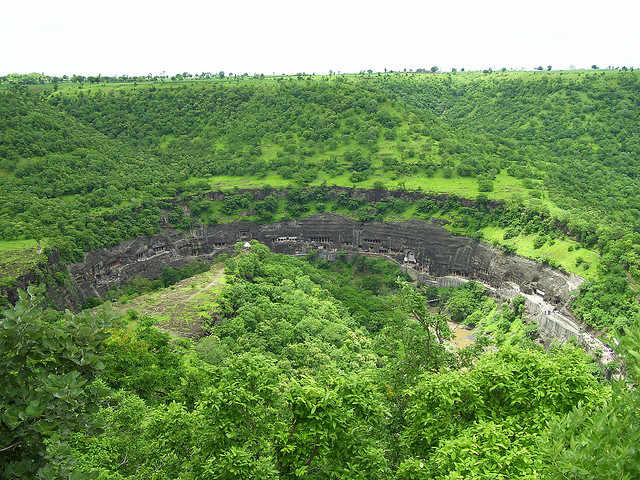 |
| No human eye saw the caves again until centuries later, when, in 1819, an Englishman by the name of John Smith was hunting a tiger when he discovered a hidden doorway to one of the temples. We know this because he unfortunately left his name on the wall of the temple - and a date, which can still be seen today. |
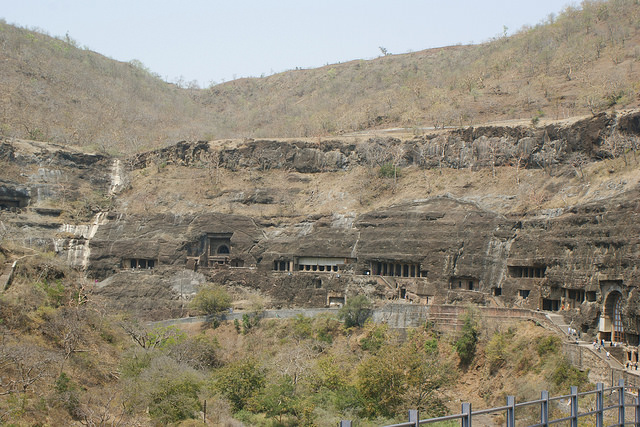 |
| |
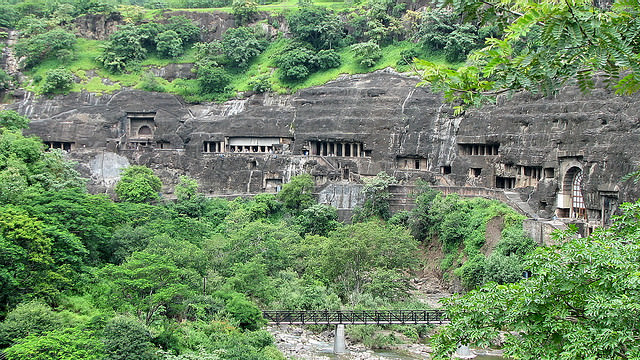 |
| But although that first English discoverer did not go immediately public with his discovery, the existence of the caves became known, and soon after Indian and European tourists started pouring into the ancient site - after much digging and cleaning, that is (the caves were home to many species of animals for centuries). |
 |
| |
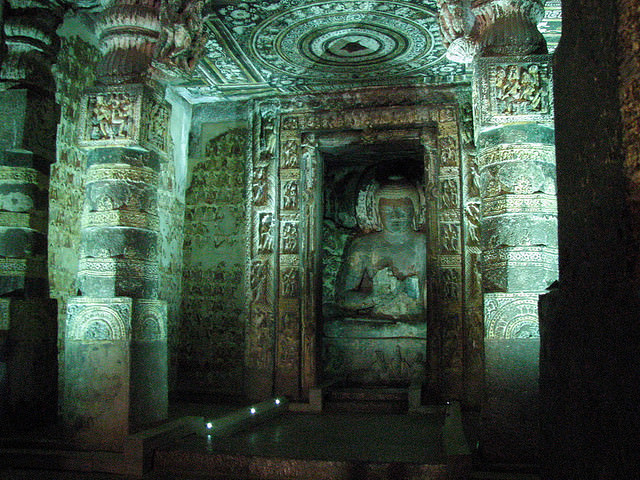 |
| Experts have dated the caves from the second century BC - 200 years before the birth of Christ. Their function seems to be ritualistic, used as prayer halls. Much use of Roman design is evident in the columns and arches of the caves. The hard rock face of the caves was apparently chiseled with rough tools and even bare hands. |
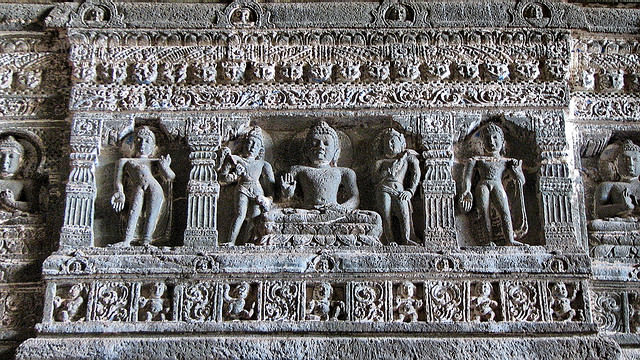 |
| |
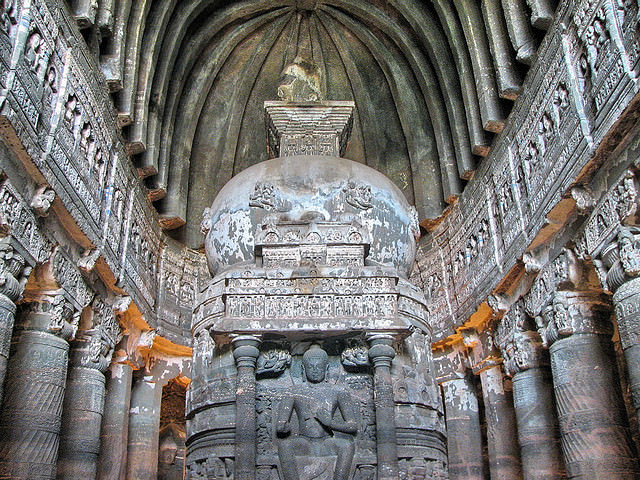 |
| It seems that the first hallowed caves were dug during the time of The Sātavāhana Empire, which dates back to about 230BC. |
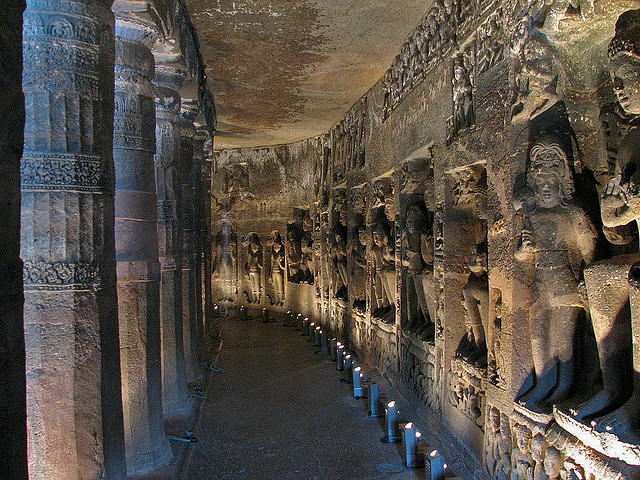 |
| Almost every surface but the floor is covered in paintings - literally. They have lost much of their former glory, of course, but efforts are being made to restore them. Poems are also painted on the walls - 547 of them - which tell stories of Buddha's previous lives. |
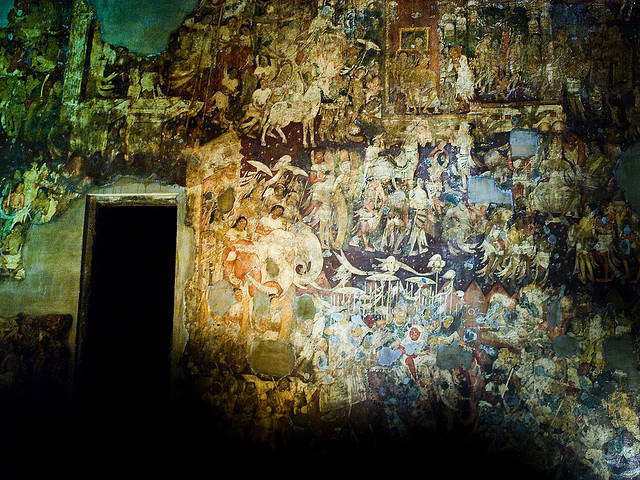 |
To create them, a chisel was used to make room for plaster on the walls which was spread on the surface. Before it dried, the painter would paint on it, soaking it into the plaster so it became part of the surface. This method has been proven to survive for over 2000 years.
|
 |
| No one knows why the caves were deserted, and we may never know the answer to this mystery. But they continue to draw many visitors who marvel at the art of the ancients that came before them. |
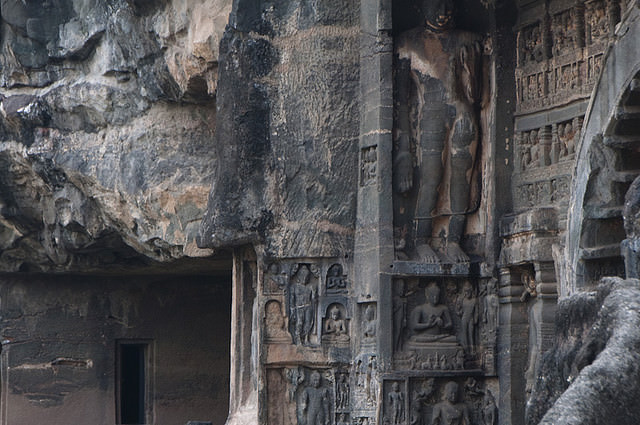 |
| |
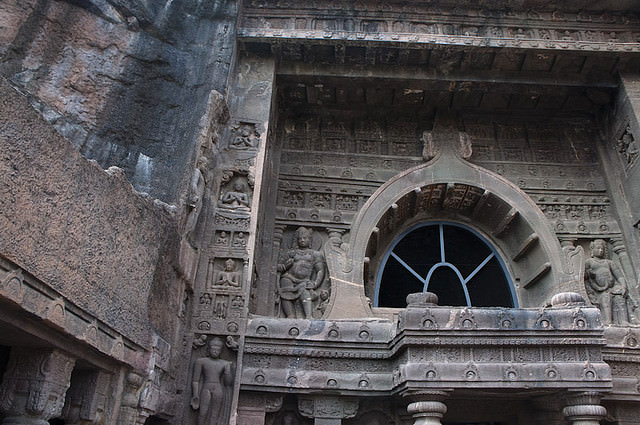 |
| |
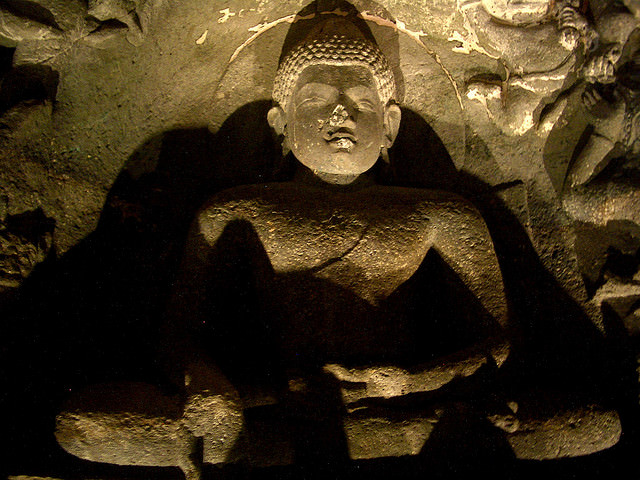 |
| |
 |
| |
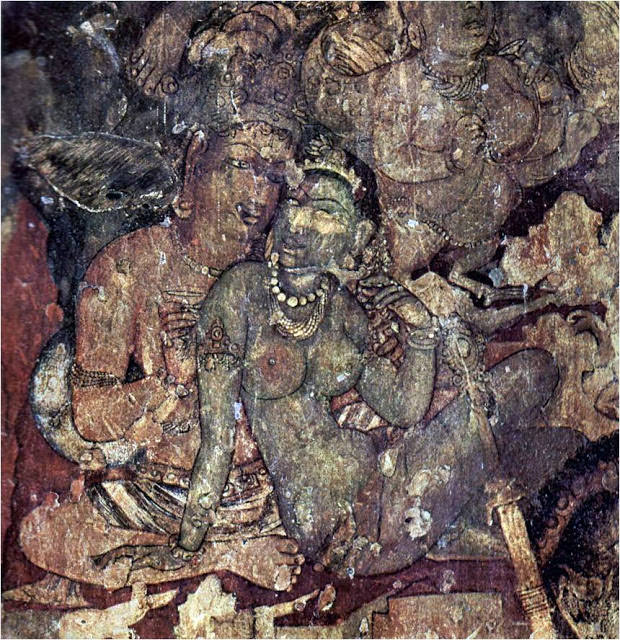 |
| |
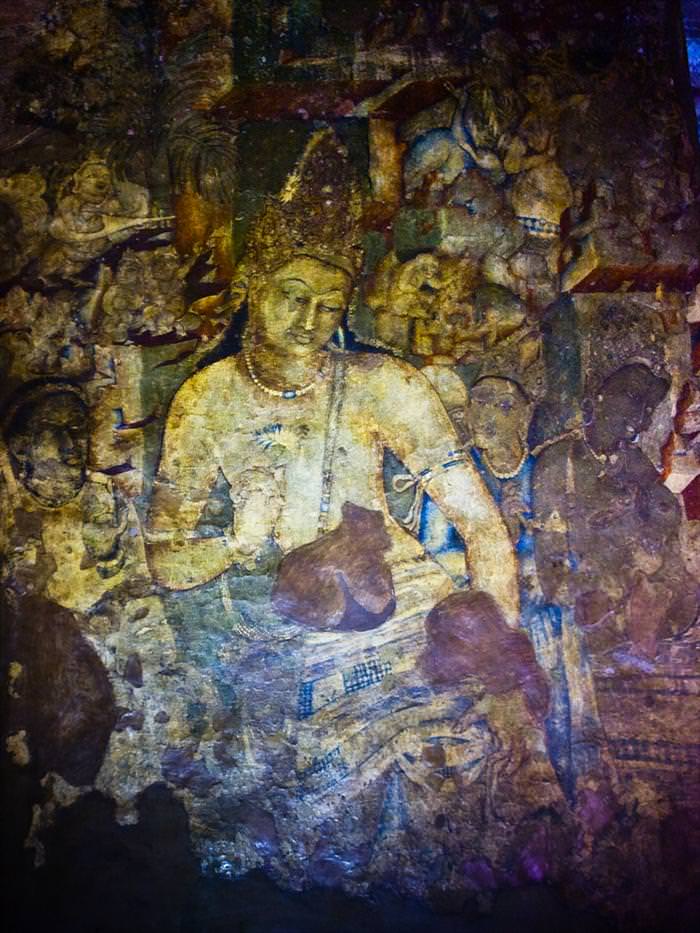 |
| |
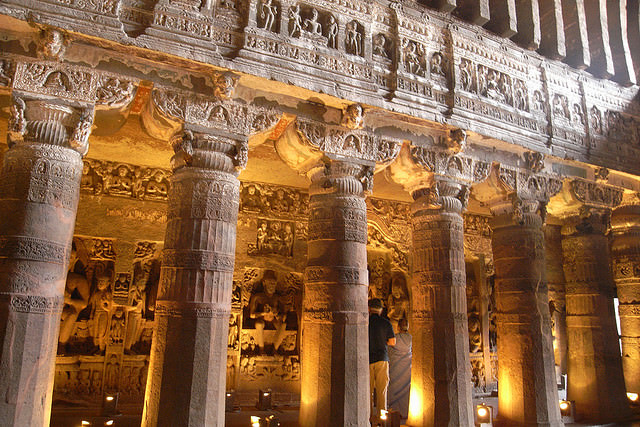 |
| |
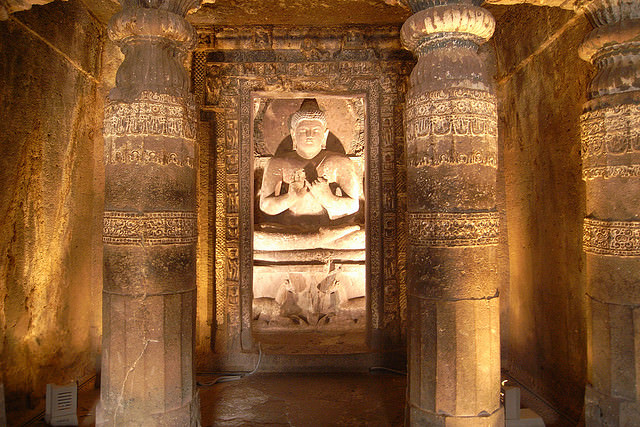 |
| |
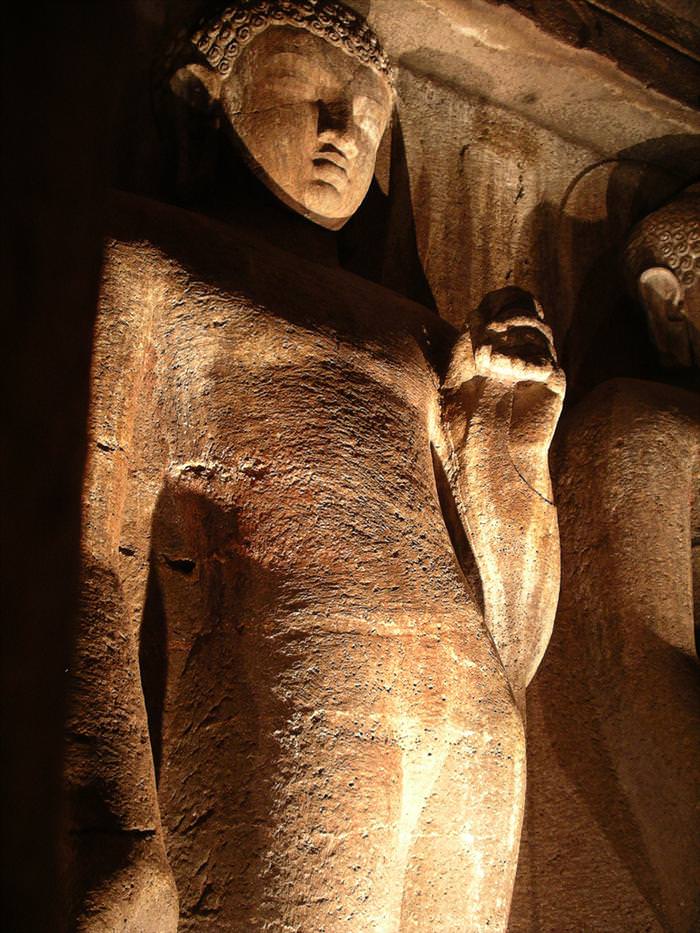 |
| |
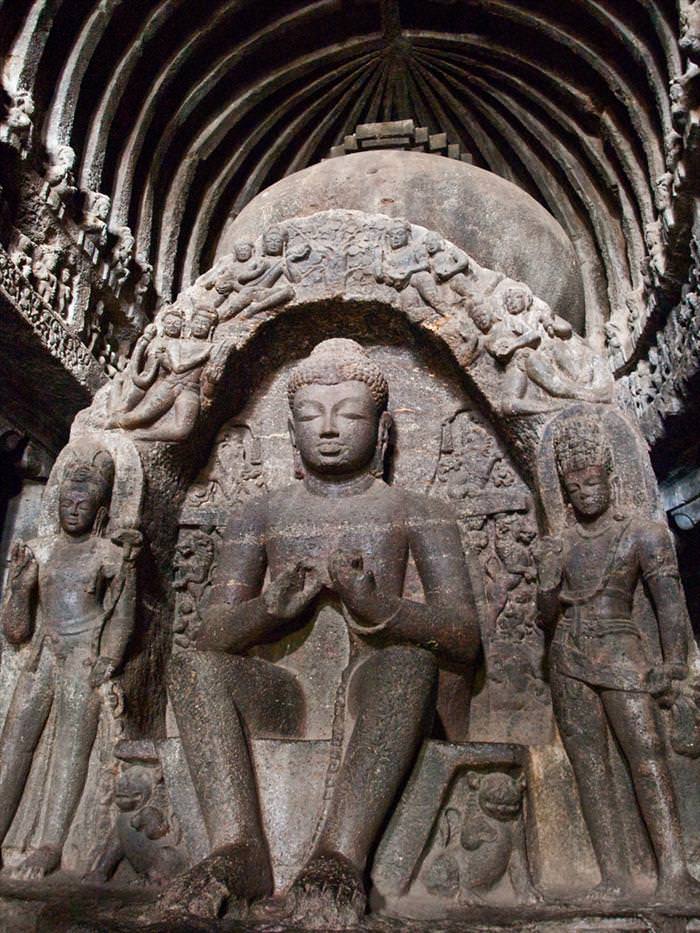 |



























No comments:
Post a Comment